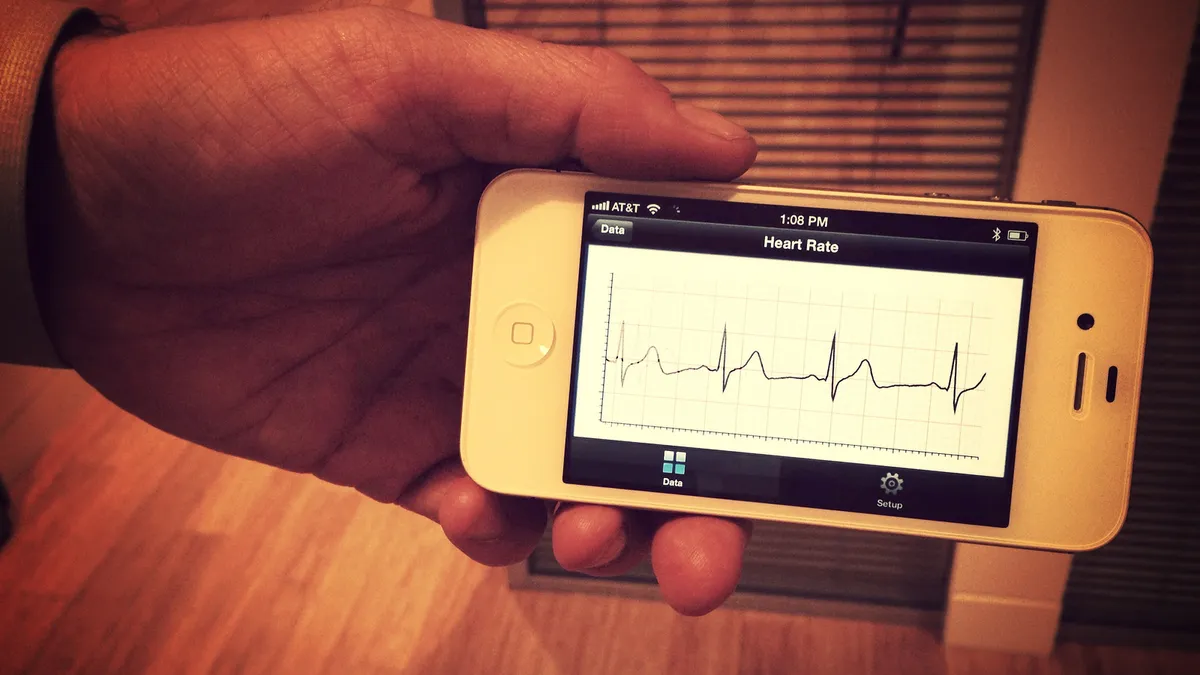Dive Brief:
- Medical apps have enormous potential to improve healthcare outcomes and lower costs but will need a regulatory framework that encourages rigorous evaluation of which apps can make a difference, asserts a Viewpoint article published on JAMA online.
- The FDA recently announced a precertification program for mobile apps, but as currently designed it doesn't require evaluation of whether the products improve patient health outcomes before they are introduced to the marketplace, the authors said. Their concerns over the so-called Pre-Cert program echo those raised by Senate Democrats last week.
- In addition to a set of robust tools to objectively assess the merits of health apps, the policy approach should require the FDA to review the apps for safety, privacy and false claims, said author David Bates of Brigham and Women’s Hospital and Harvard Medical School and his colleagues.
Dive Insight:
More than 325,000 health apps have been developed over the past decade, but data suggest the market is not meeting the needs of patients or clinicians, the Viewpoint article contends. In one example cited, three of four smartphone apps incorrectly diagnosed more than 30% of melanoma cases as benign.
The current regulatory framework that Congress established in 1976 was designed for hardware, prompting the FDA to develop the new software as a medical device (SaMD) precertification program. According to the FDA, the program could replace the need for a premarket submission for certain medical software products and streamline the review process for marketing submissions for others.
At a medical device industry conference earlier this month, Bakul Patel, associate center director for digital health at the FDA, told the audience the agency is still working through what types of software will require a review and what will not.
Apple, Fitbit and Johnson & Johnson are among nine companies the FDA has selected to participate in a health software precertification pilot program. The FDA is working on ways to measure performance data from the pilot participants to benchmark benefits and risks of SaMD products, Patel said.
According to the JAMA Viewpoint article, the precertification program, as designed now, will not require evaluation of whether the products improve outcomes before they are introduced to the market, a departure from the FDA’s oversight role in other domains.
Top Democrats on the Senate's health committee on Wednesday asked FDA Commissioner Scott Gottlieb and CDRH Director Jeff Shuren for reassurances the agency will not sacrifice patient safety or overstep its statutory authority when implementing its software precertification pilot program.
The JAMA authors advocate for:
- rigorous, standardized evaluation of apps;
- FDA review for safety, privacy and false claims;
- increased federal support for research on outcome effects, particularly for chronic diseases and high-cost care;
- open, interoperable application programming interfaces (APIs) to support data exchange between health apps and electronic health records;
- a public open-source site for app comparisons.
“Substantial gaps exist today between what the marketplace is producing in terms of apps and what is needed to make care better. Specific approaches can be taken at the FDA and at federal agencies that support research and encourage redirection. The marketplace needs to produce applications that will be helpful to patients and health care organizations, along with the ability to identify them,” the authors wrote.













